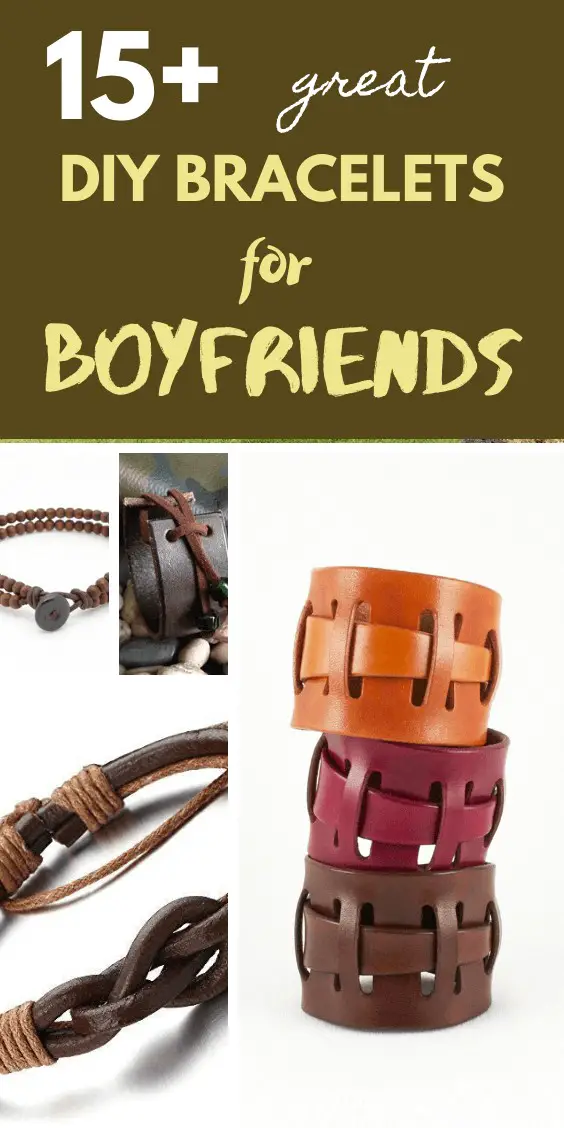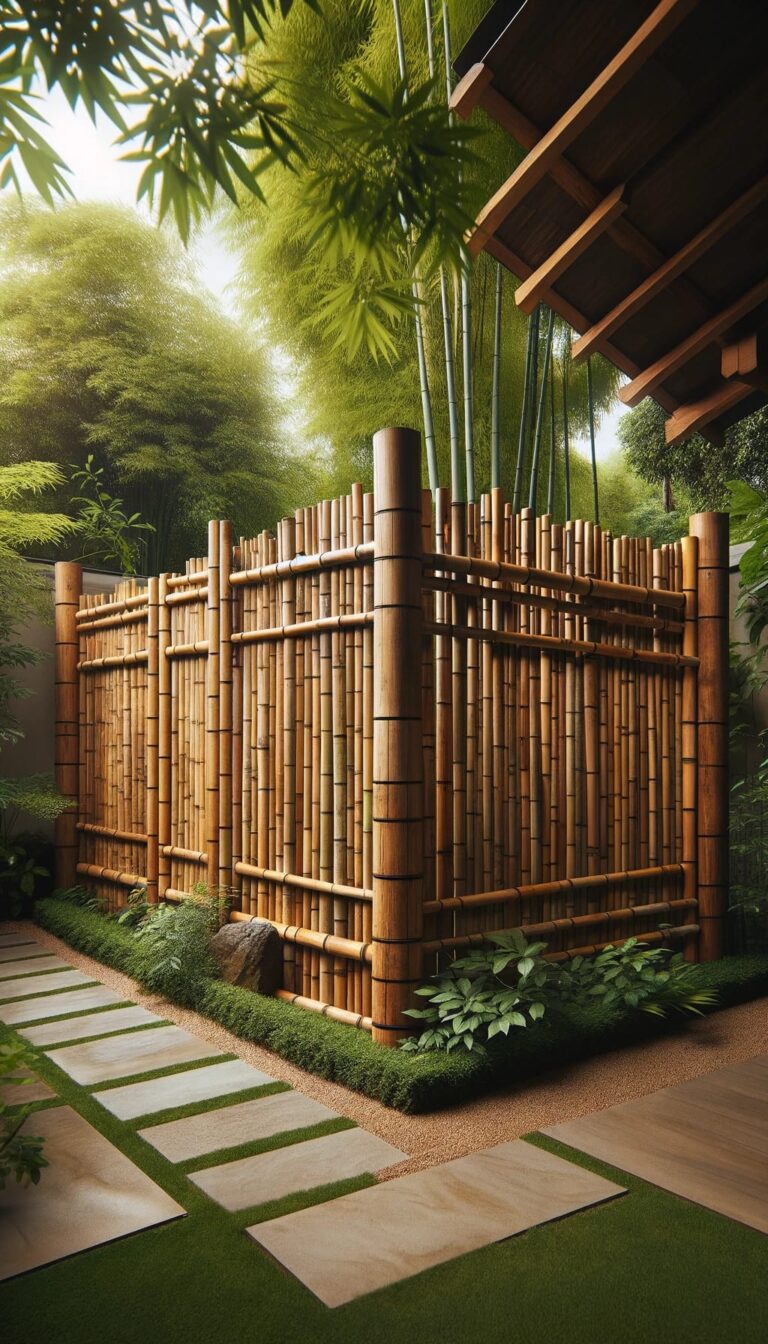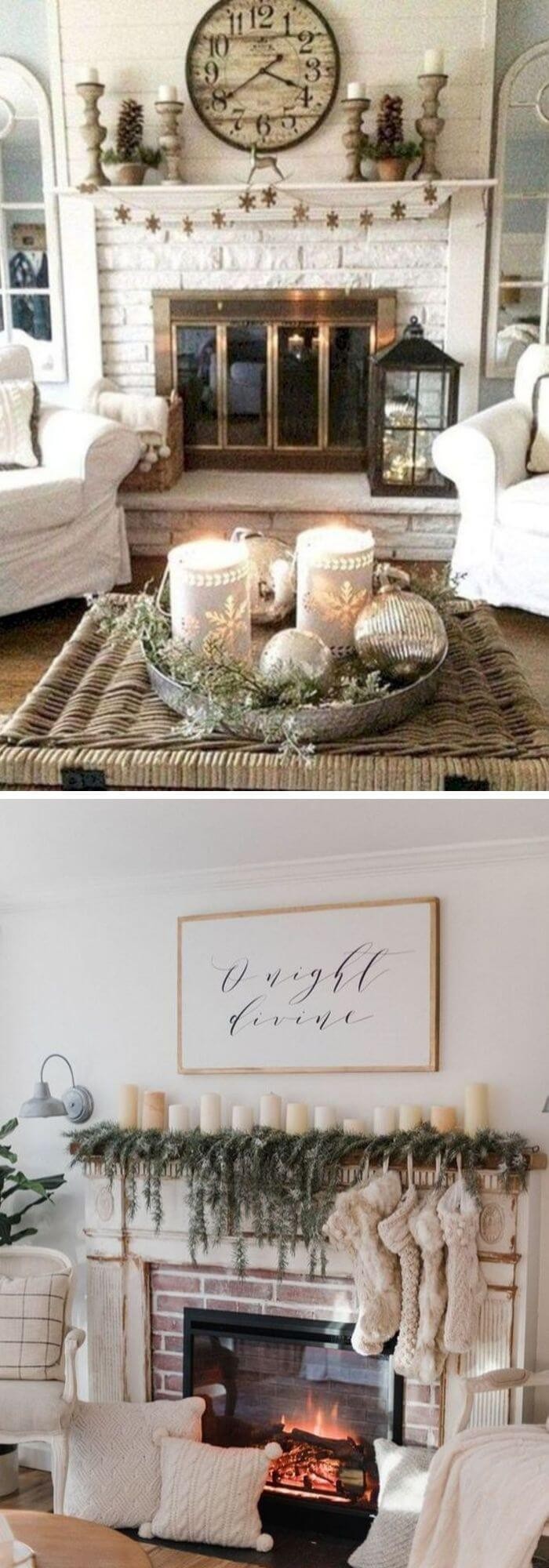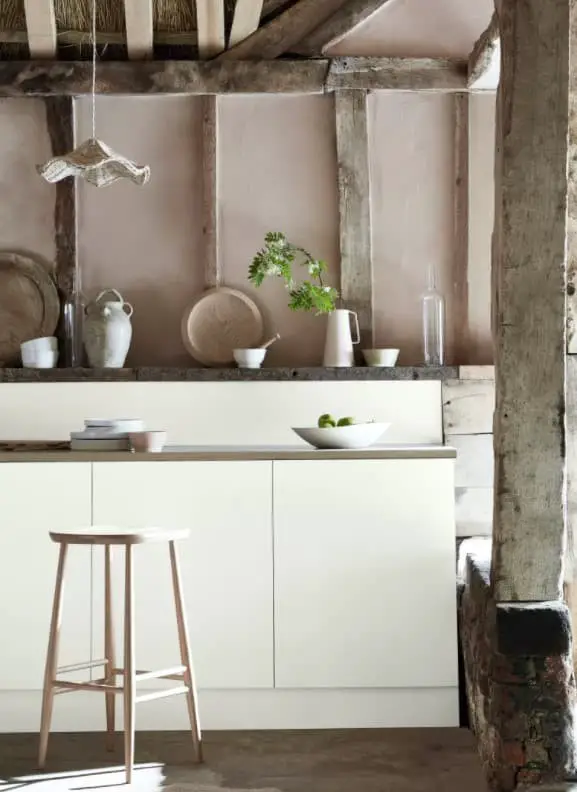19+ Different Types Of Roof Shingles (Materials, Brands, Pros, Cons, Cost)
Building a home is an intricate process that requires careful consideration of various aspects, including colors, furniture, tiles, paint, and roofing. One crucial aspect to decide on is the type of roof shingle to use. There are numerous options available, each with its pros, cons, and cost. In this article, we will delve into the different types of roof shingles, helping you make an informed decision when choosing a suitable one for your home.
From asphalt shingles to metal roofing, wood shingles to tile shingles, and many more in between, we will explore the various options available. We will also discuss factors to consider when selecting a roofing material, such as roof slope, architectural authenticity, weather endurance, long-term maintenance, energy efficiency, material weight, and price range. Additionally, we will touch on the lifespan of roof shingles, common FAQs about types of roof shingles, and more.
What is a roof shingle?
Roof shingles, a staple in modern roofing designs, offer a unique blend of form and function. These rectangular pieces of asphalt, either applied from top to bottom or overlapping for comprehensive coverage, serve as the primary means of waterproofing while also providing an aesthetically pleasing finish. Notably, roof shingles are a cost-effective and relatively easy installation process makes them an attractive option for homeowners and construction enthusiasts alike.
The range of materials used in their production includes metal, slate, clay tiles, and cedar, each offering its own distinct characteristics and lifespan. On average, roof shingles can last anywhere from 10 to 30 years, depending on the specific style and type employed. Additionally, these lightweight components are surprisingly workable, allowing DIY-savvy individuals with construction experience to successfully install them without professional assistance.
Types of roof shingles (pros, cons, cost)
When it comes to selecting the ideal material for your roofing project, there’s no shortage of options. One crucial consideration is the type of roof shingle you’ll be using. Here’s a comprehensive guide to help you navigate the various types of roof shingles available in the market.
From traditional and timeless options to modern and innovative choices, we’ll take a closer look at each type, helping you make an informed decision for your roofing needs.
Asphalt shingles
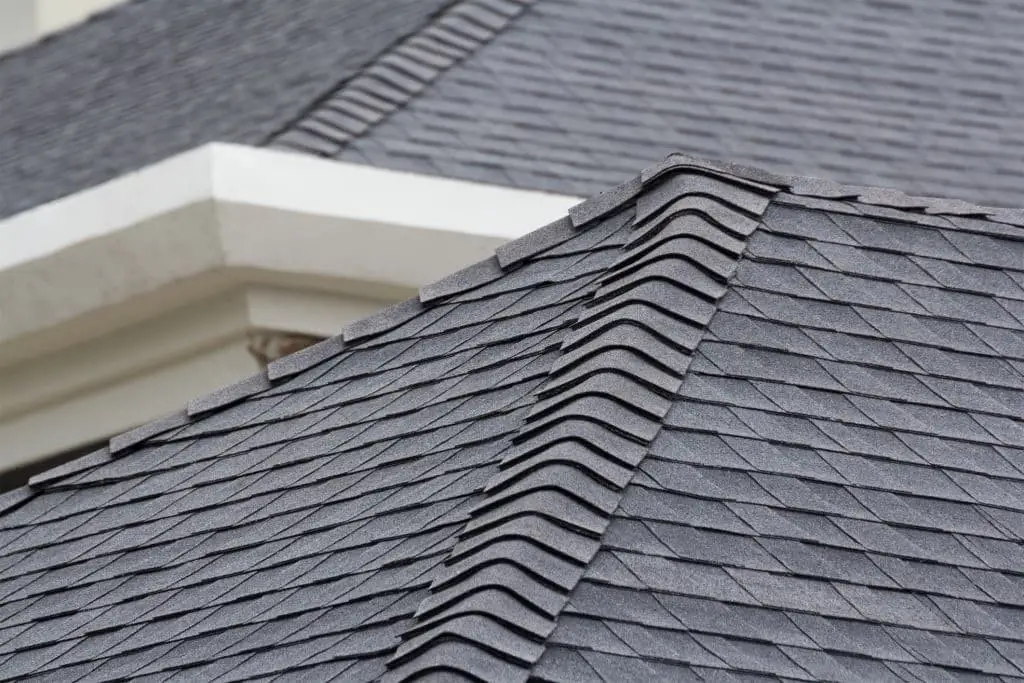
Asphalt shingles are a popular choice among homeowners, and for good reason. Not only are they affordable, but they also come with a range of design options that can enhance the aesthetic appeal of a property. Furthermore, they’re relatively easy to install, repair, and replace, making them a cost-effective option in terms of installation fees. One of the key attributes that contribute to their popularity is their low upfront cost, which makes them an attractive choice for those on a budget.
Additionally, asphalt shingles come in a variety of colors, allowing homeowners to select a shade that complements their home’s exterior. The average lifespan of an asphalt shingle roof is 20-25 years, although this can vary depending on the quality of the shingles and the installation. When it comes to cost, prices will depend on the size of your home and the pitch of the roof. To get the most value for your money, it’s essential to find a reliable supplier and installer.
One of the primary advantages of asphalt shingles is their ability to divert UV rays away from the roof, providing a cooler feel. While they may not be the most eco-friendly option, they do offer moderate protection against the elements. However, one potential drawback is that they have a relatively short lifespan of just 20 years and can be easily damaged by strong winds, making them less suitable for areas with extreme weather conditions.
3-Tab
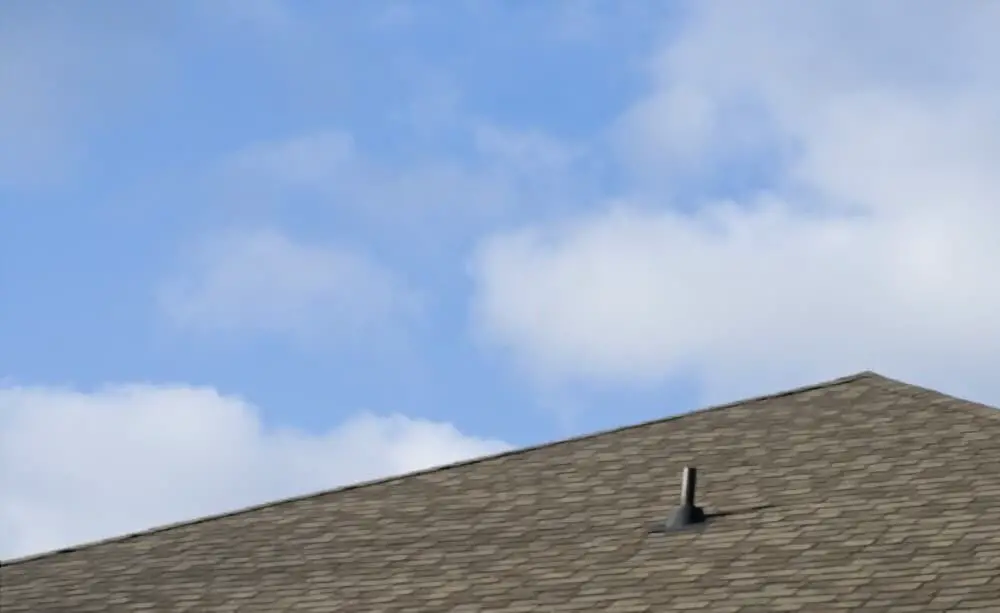
A distinctive characteristic of this roofing type is its ability to provide three different shingle appearances when installed, offering a unique aesthetic appeal. While it may not be the most recommended option, it does have some advantages, including being relatively affordable compared to other types and ease of repair. However, it’s essential to consider some drawbacks, such as limited suitability for harsh climates, a shorter lifespan, and typically shorter warranties.
Proper ventilation is also crucial during installation. Furthermore, this type of roofing may not contribute significantly to resale value. On the positive side, it can be cost-effective, with installation and labor costs ranging from $2300 to $3500, making it an accessible option for many homeowners. Additionally, its ease of installation and low maintenance requirements make it a practical choice.
Nevertheless, it’s worth noting that this roofing type may be prone to repairs and has lower resistance to wind and rain.
Architectural Shingle
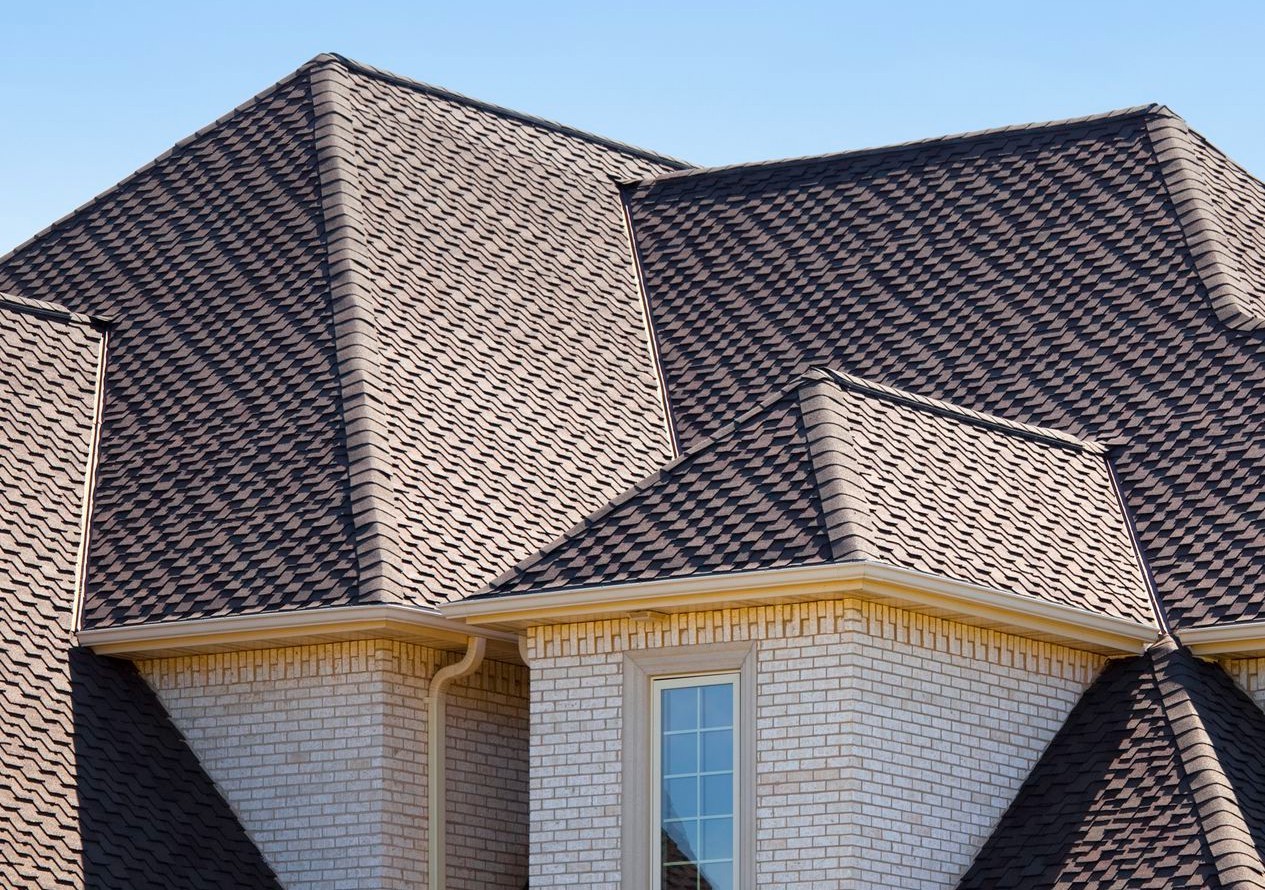
Architectural shingles are a popular choice among builders and homeowners due to their unique dimensional appearance, which can mimic the look of cedar or slate. This type of roofing offers high aesthetic value, making it an excellent option for those seeking to hide imperfections on their roof. With a lifespan that can last up to 30 years, these shingles are also extremely durable, resisting cracking and curling even when exposed to direct UV rays.
While they can still be affected by outdoor elements, architectural shingles are known for their longevity. However, they do come with a higher price tag and are heavier than traditional asphalt shingles, which may impact the structural integrity of some homes. Installation costs range from $13,500 to $21,500, depending on the size and slope of the roof. Despite these drawbacks, architectural shingles are a great choice for those seeking a long-lasting, visually appealing roofing solution.
Hip and Ridge
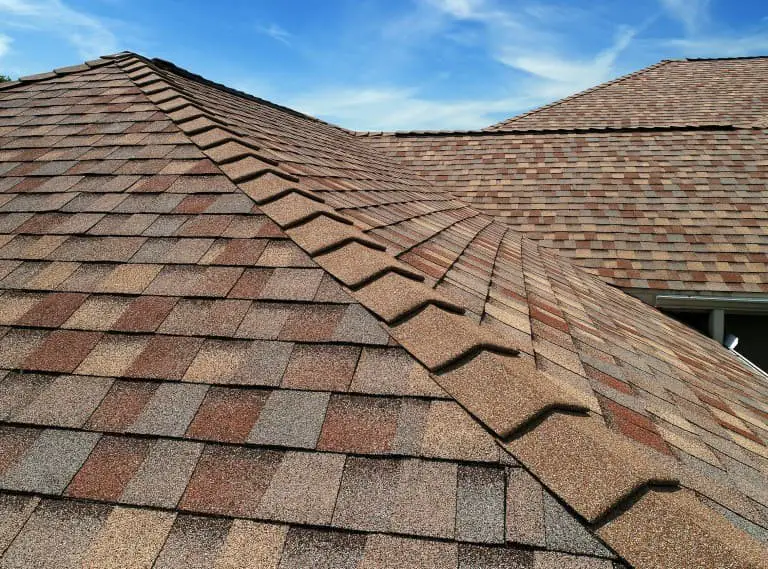
Hip roofs are a popular choice, second only to gable roofs in terms of popularity. Characterized by four sloping sides that meet at the exterior angle, known as the hip, they offer a unique visual appeal that can be an attractive feature for homeowners and neighbors alike. The rectangular shape of hip roofs provides ample space for interior design and makes them a suitable choice for areas prone to high winds and heavy snowfall, including hurricane-prone regions.
Additionally, this roofing style offers benefits such as extra attic space, improved ventilation, and reliable drainage. However, the installation process can be more complex and requires professional expertise, which may come at a higher cost. With prices ranging from $20,000 to $50,000, including installation costs and dependent on roof slope and coverage, hip roofs are an investment worth considering for those seeking a visually appealing and functional roofing solution.
Metal Roofing
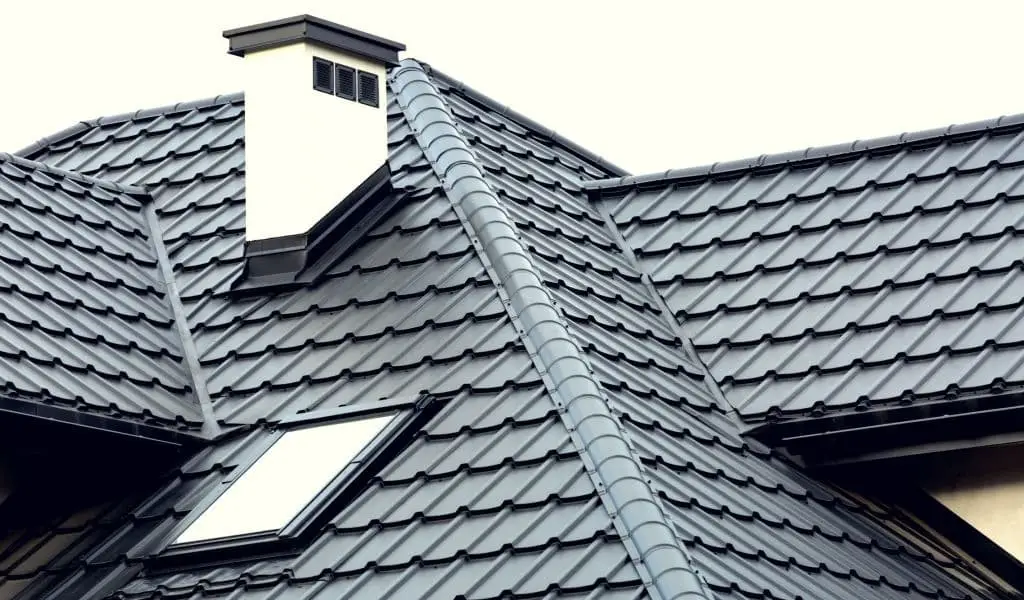
Metals are renowned for their durability, making them an excellent choice for construction projects. As a roofing material, they’re well-suited for both flat and steep rooflines. Their ability to withstand harsh outdoor conditions is unmatched, and they’re also remarkably affordable, with some options lasting up to 50 years.
While metal roofing has its advantages, there are some drawbacks to consider.
Some contractors advise against using metal due to the potential for water leaks and subsequent repairs. Additionally, installing a metal roof often requires building an extra support structure. To maintain their integrity, metal roofs also require periodic coating to prevent rusting and corrosion.
The cost of metal roofing installation typically falls within the range of $2,000 to $17,000, depending on the scope of the project.
On the plus side, metal roofs are durable, long-lasting, and resistant to rust or corrosion. However, they may be more expensive than asphalt-based options.
Standing Seam Panels
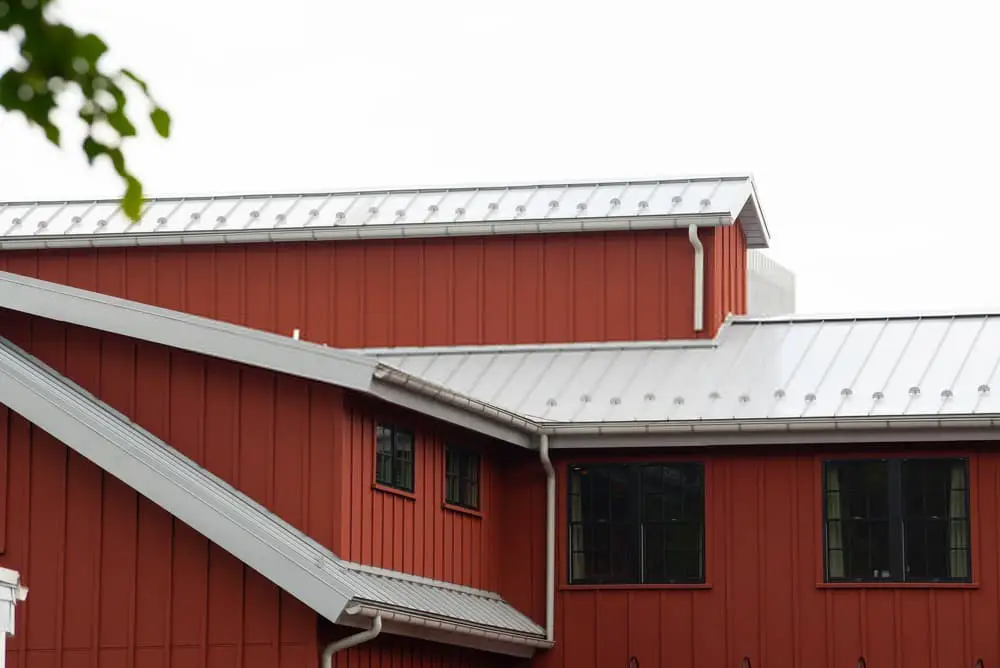
Standing seam panel roofing is regarded as the premium option, although it comes at a higher price point. Initially popular among commercial and business properties, its appeal has expanded to homeowners seeking high-performance roofing solutions. The primary material composition features aluminum, which outnumbers metal due to metal’s propensity to rust and compromise roof integrity.
One of the key advantages of standing seam panel roofing is its ability to regulate indoor temperatures, making homes cooler and more comfortable. Its durability and long lifespan also contribute to its popularity. However, it’s crucial to note that this type of roofing requires a skilled installer with in-depth knowledge of the material, making installation challenging. Furthermore, standing seam panel roofing cannot be installed on flat roofs, which may limit its applicability.
Stone-Coated Metal Roofing Shingles
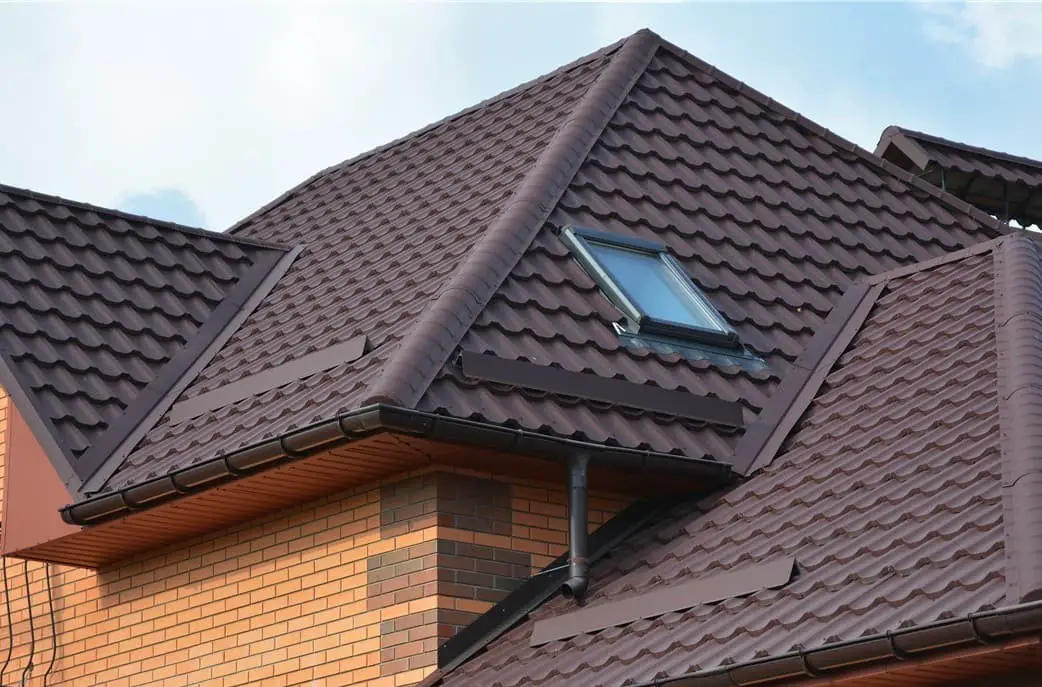
Combining the industrial strength of steel with traditional roofing materials like shingles, shakes, and tiles, this type of roofing offers an impressive fusion of durability and aesthetics. While its hefty price tag may be a deterrent for some, it’s hard to ignore the benefits it provides. With a lifespan that can stretch up to 70 years, this option is particularly appealing for commercial buildings seeking a long-term solution.
Furthermore, its ability to withstand even the harshest climates makes it an excellent choice for regions prone to extreme weather conditions. Additionally, the material boasts a wide range of textures, designs, and colors, allowing homeowners to personalize their roofing to suit their unique style. Perhaps most impressively, this type of roofing is remarkably low-maintenance, capable of maintaining its condition even in neglect.
While some may bemoan the initial cost, which can range from $850 to $1,450 per square foot, the long-term value and durability it provides make it a worthwhile investment for those seeking a reliable and attractive roofing solution.
Impact-Resistant Roofing Shingles
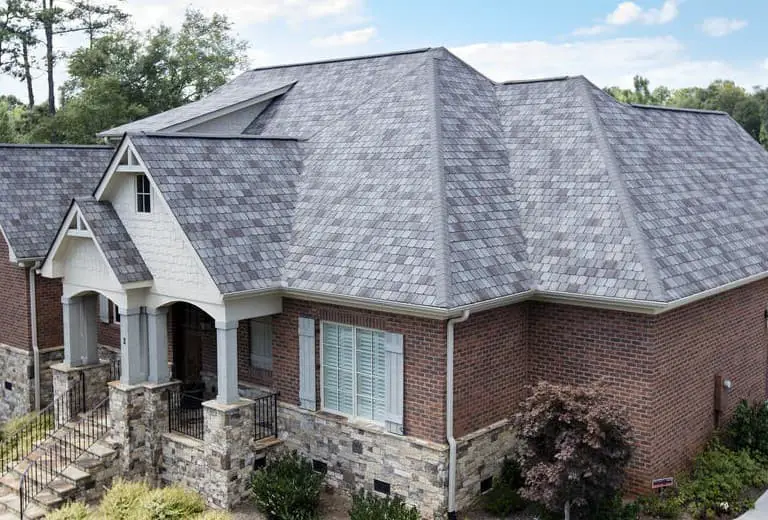
The durable type is specifically engineered to withstand the harshest weather conditions, its name alone giving away its intended purpose. With a lifespan of 30-50 years, this material’s performance and longevity may be compromised if regularly exposed to strong winds and storms. On the positive side, it provides full coverage protection for homes while also allowing for good ventilation.
Additionally, it comes in a range of colors, textures, and sizes, offering homeowners a high degree of customization. However, one significant drawback is its expense, with costs ranging from $2,400 to $2,650 per 1,600 square feet.
Wood shingles
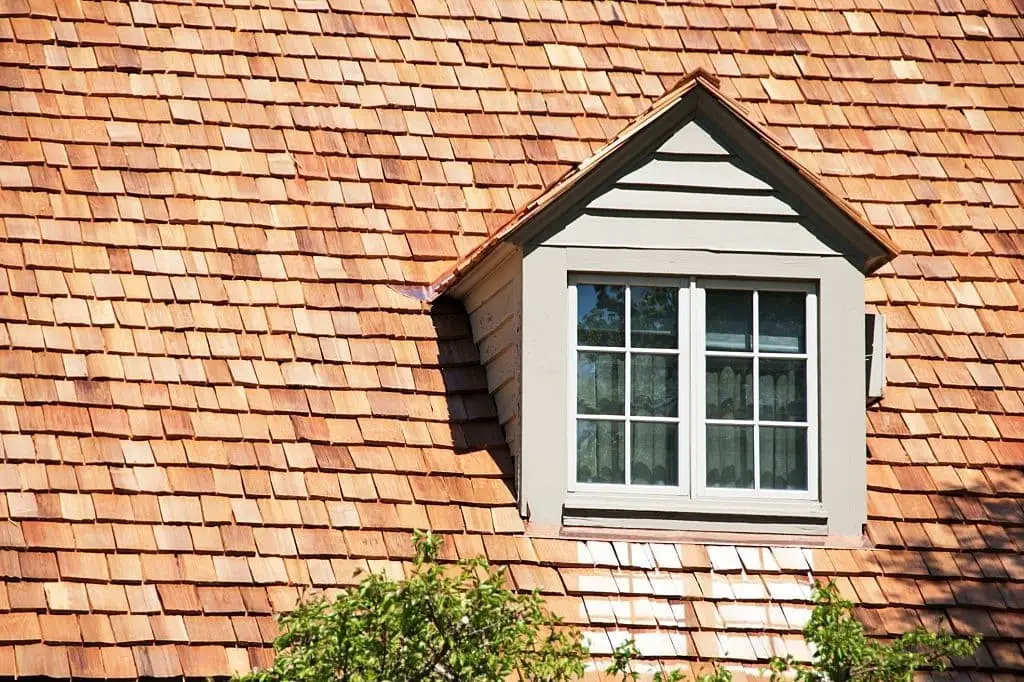
Hardwood shingles are a popular choice among homeowners due to their appealing appearance. However, they come at a higher price point compared to other options on this list. The installation process is also more labor-intensive, contributing to the increased cost. On the bright side, these shingles can last for over 60 years and are relatively easy to repair when needed. The materials required for repairs are also readily available.
Despite their durability, hardwood shingles do require more demanding maintenance and upkeep due to their vulnerability to moisture damage. Resealing is necessary from time to time as well. Fortunately, simulated wood shingles provide a similar aesthetic appeal without the hefty price tag, although they’re not entirely made of wood. They mimic the appearance of hardwoods closely enough that many homeowners find them a suitable alternative.
Wood Shake Shingles
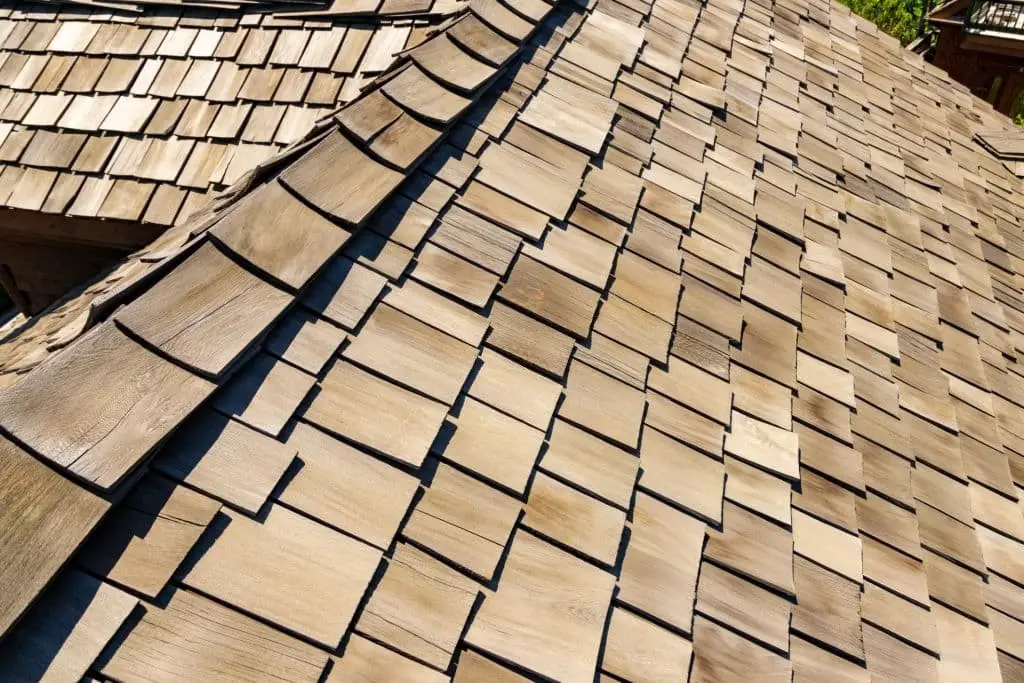
Wood shingles, with their rougher, staggered edges, present a unique challenge when it comes to maintaining a watertight seal. This means that installing layers beneath them is necessary to prevent moisture from seeping in. Despite this added complexity, wood shingles are an eco-friendly option that offers a natural, attractive appearance. With a lifespan of 50 years or more, they’re a durable choice for those willing to invest time and money into their upkeep.
While their flammability does require special care to keep them dry, the benefits they offer make them a popular choice among homeowners seeking a long-lasting, sustainable roofing solution.
Tile shingles
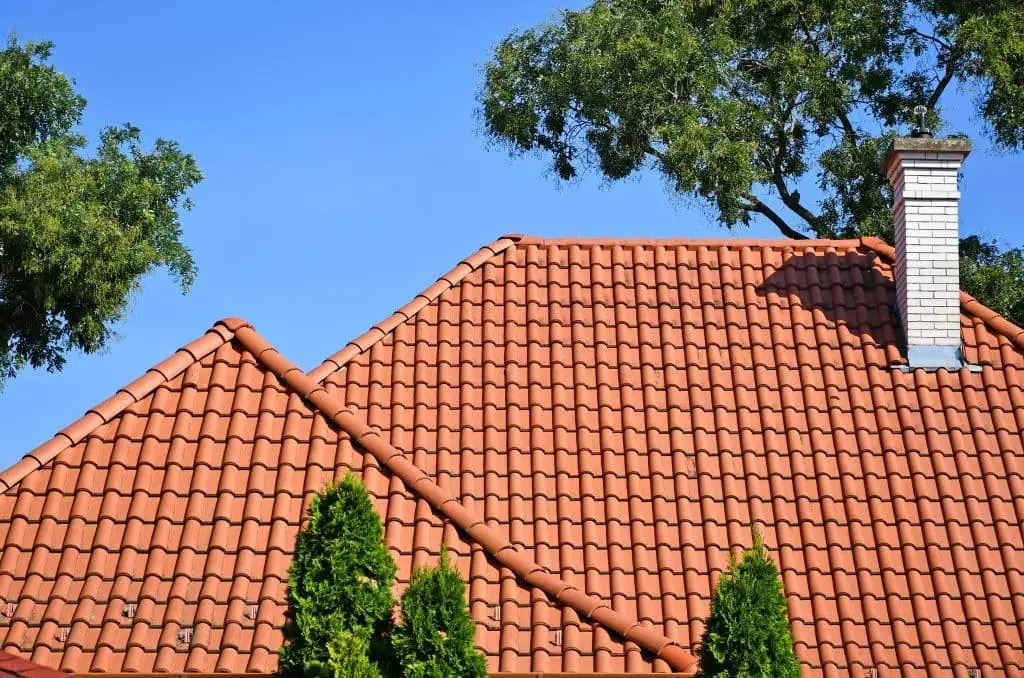
Clay tile is an upscale option that offers exceptional longevity, with some types lasting more than 80 years. The installation process can be more intricate, but the payoff lies in its durability and versatility. Homeowners who invest in clay tile appreciate its ease of repair, removal, and replacement, as well as its natural ventilation capabilities, which prevent moisture from seeping into the attic space or ceiling.
This material is particularly popular among historic architecture enthusiasts, where it’s used to maintain a traditional aesthetic. While it may not be the most budget-friendly option, ranging in price from $17,000 to $60,000 depending on customization levels, clay tile’s eco-friendliness and rot-resistance make it an attractive choice for those seeking a premium roofing solution.
Clay Tile Shingles
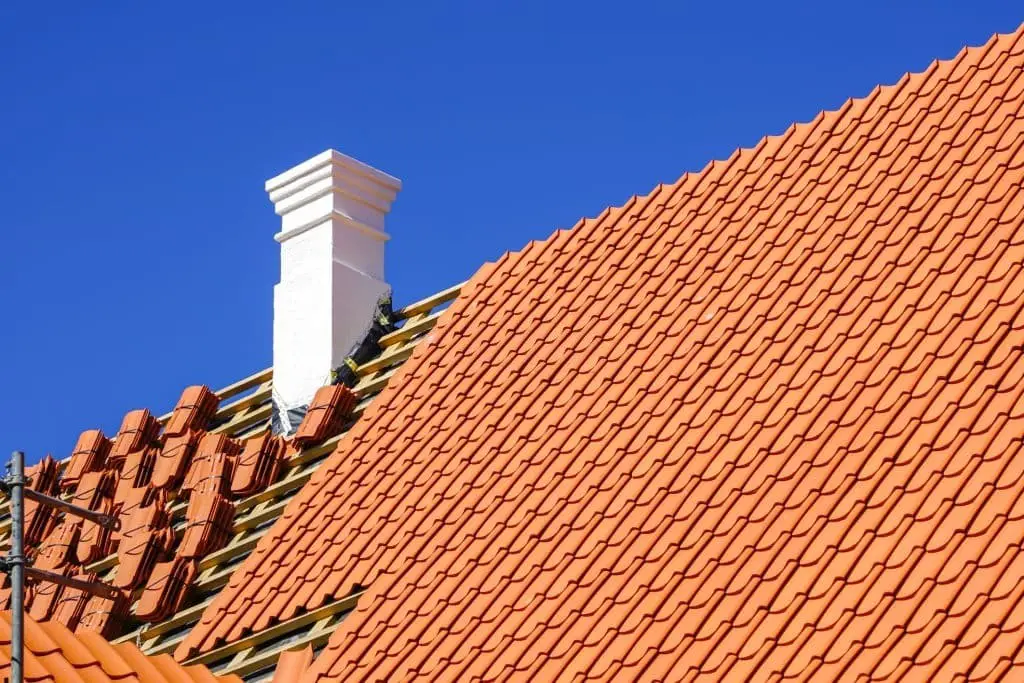
Clay tile shingles offer a unique combination of benefits and drawbacks. Their malleable nature allows them to be molded into various shapes and colors, making them an excellent fit for homes with colonial Spanish or Mediterranean styles. The tiles’ light color palette also contributes to their soothing visual appeal. As an eco-friendly option, clay tile shingles provide excellent protection against hot climates while elevating a home’s aesthetic.
However, they may not be the best choice for areas with low temperatures, as their performance suffers in such conditions. Additionally, clay tile shingles can be heavier and more expensive than other options, with prices ranging from $800 to $2,500 per square foot (excluding installation costs). Furthermore, a cracked tile can lead to roof leaks, emphasizing the importance of proper inspection or installation by professionals.
Overall, while clay tile shingles offer many advantages, they may not be suitable for every home, particularly those without adequate support.
Concrete Tile
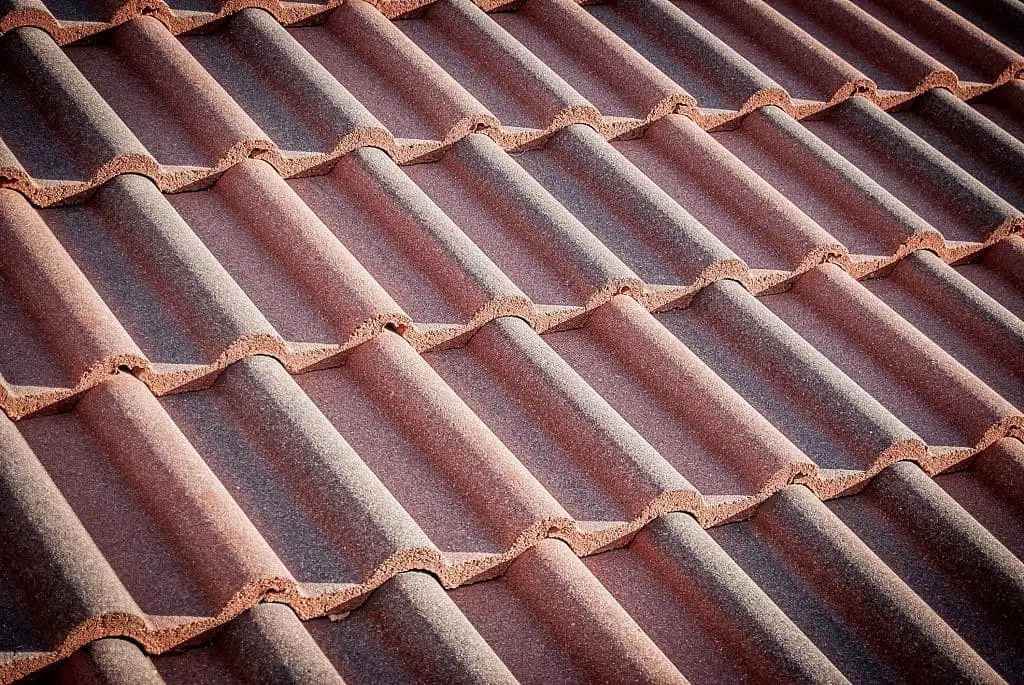
While concrete tiles may not be as flashy as some other roofing options, they offer a unique combination of affordability, durability, and eco-friendliness. Made from a mixture of water, sand, and cement, these tiles are a more budget-friendly alternative to clay tile shingles. Their recyclable nature also makes them an attractive choice for homeowners looking to reduce their environmental impact.
In terms of coverage, concrete tiles provide comprehensive protection for the home, while also being impenetrable to moisture. However, they may not be the best choice for homes in hotter climates, as they can actually make a room feel warmer over time due to limited ventilation. On the plus side, these tiles are expected to last longer than 50 years and offer high aesthetic value, making them a worthwhile investment for many homeowners.
The main drawback is their relatively high cost, with prices ranging from $850 to $50,000 per square foot depending on customization level.
Slate shingles
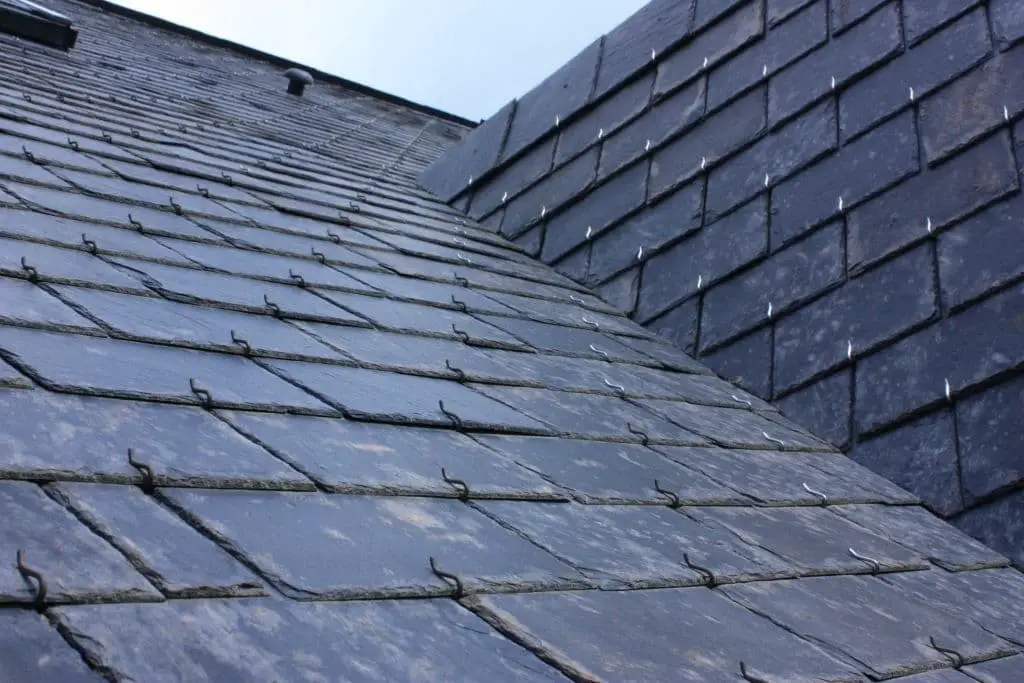
Slate shingles are renowned for their remarkable durability, boasting a lifespan of up to 150 years. Crafted from natural stone, they offer an unparalleled level of water and fire resistance. Beyond their impressive resilience, slate shingles also boast a striking visual appeal that can significantly enhance the resale value of a property.
While this type of roofing material has its advantages, it is not without its drawbacks.
The cost of installing slate shingles can be prohibitively expensive, ranging from $5,000 to $23,000 per square foot with installation costs included. Furthermore, their heavy weight makes them unsuitable for all types of homes.
Another challenge lies in the limited availability of slate shingles in the market, making it difficult to procure replacement or repair services.
As such, it is crucial to engage professional roofers who have the expertise and resources necessary to handle this complex installation process. The cost of any mistakes or damage would be substantial in the long run.
Rubber Roofing
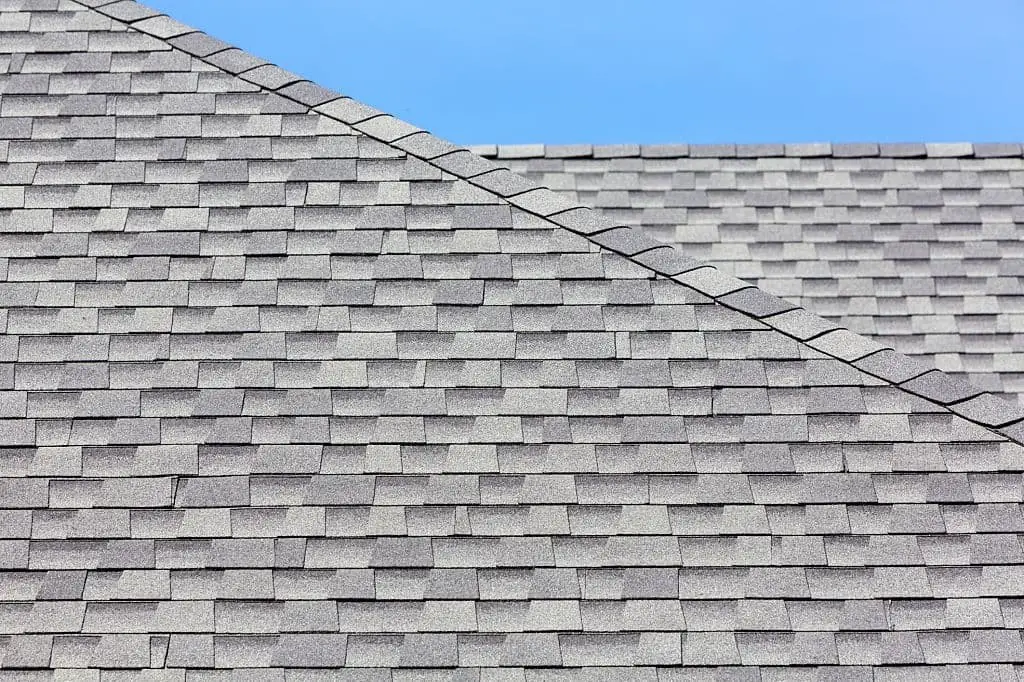
EPDM, a type of roofing material, is commonly used for low-slope roofs due to its waterproofing properties and resistance to water, fire, and high winds. However, it’s not impact-proof. Another option, TPO, while also a solid choice, has the drawback of cracking over time. Rubber roofing is an eco-friendly solution that can reduce energy costs by reflecting UV rays.
While it may be more expensive upfront, with installation costs ranging from $8,000 to $14,000 per square foot, its durability and low maintenance requirements make it a worthwhile investment. A few drawbacks include color fading and the need for professional installation. Despite these issues, EPDM roofing offers a long lifespan and is delicate enough to require care during handling.
Copper Shingles
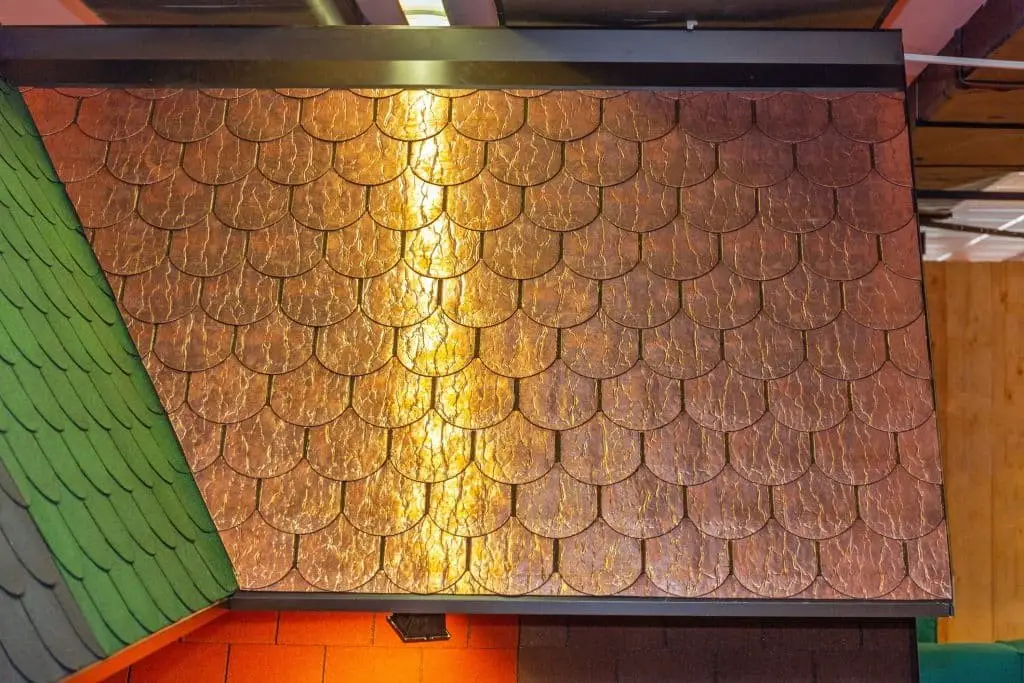
This type of roofing is highly sought after for its unique blend of old-world charm and long-lasting durability. Its lightweight properties make it an attractive option for homeowners who want to add character to their property without sacrificing structural integrity. The variety of styles available is also a major selling point, as homeowners can choose from a range of designs to suit their individual tastes.
One of the biggest advantages of this type of roofing is its low maintenance requirements – it’s essentially self-sufficient, requiring little to no upkeep over time. While this longevity comes at a cost, with prices ranging from $1,100 to $1,500 per square foot, many homeowners feel that the benefits far outweigh the initial investment. Additionally, the natural patina that develops over time adds an extra layer of charm and character to the roofing material.
The main drawback is the difficulty in finding skilled professionals who specialize in copper roofing installation, which can be a major hurdle for those looking to add this unique feature to their property.
Grass (Green) Roof
This type of roof system offers numerous benefits, particularly in environments with a suitable climate. Its primary purpose is to create a unique space for rooftop gardening, allowing homeowners to grow herbs, flowers, and other plants. The result is an enhanced aesthetic appeal that sets homes apart.
The advantages are multifaceted. For instance, it provides excellent airflow, ensuring that the roof remains well-ventilated in various weather conditions.
Additionally, it offers superior insulation against both heat and cold, making it a valuable asset for homeowners.
Furthermore, this type of system is effective at blocking out noise during heavy rainfall, providing added peace and quiet. However, it’s essential to note that maintaining the plants requires regular watering, which can lead to potential issues like leakage and damage to the roof over time.
While there are many benefits, it’s crucial to acknowledge some of the drawbacks.
The upkeep required for this type of system is significant, and the initial investment may be higher than expected. Nevertheless, it remains a popular choice among homeowners seeking to improve their home’s aesthetic appeal while also enjoying the benefits of rooftop gardening.
In summary, the pros and cons of this type of roof system include:
Pros: enhances home’s aesthetic appeal, flexible for changing weather conditions, natural insulator, improves air quality, effective at soundproofing.
Cons: requires regular maintenance, dependent on roof coverage and plant types, expensive to install, challenging to maintain.
Composite Shingles
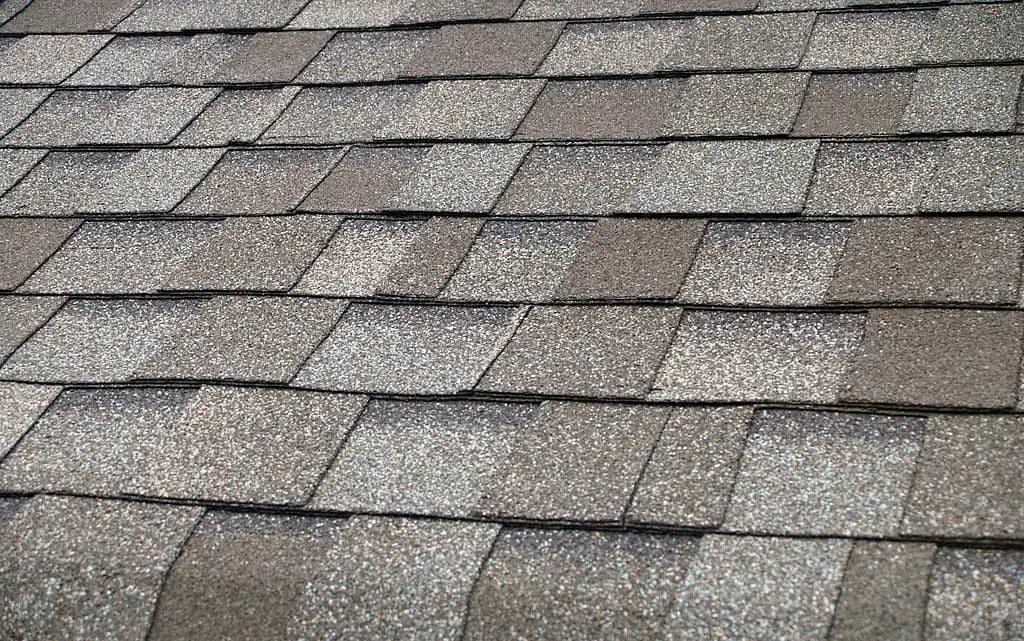
Composite shingles, a blend of new and recycled materials like plastics, wood, paper, asphalt, and fiberglass, offer a unique combination of benefits and drawbacks. While they’re pricier than traditional asphalt shingles, they’re also lighter and longer-lasting. This type of roofing is designed to mimic various styles, but it has one notable limitation: it performs poorly in areas with low temperatures.
The cost of composite shingles ranges from $300 to $1,600 per square, making it essential to choose a qualified roofer to ensure proper installation and avoid potential damage to your home. Some advantages of composite shingles include ease of installation, resistance to algae and mold, and fire and high wind resistance.
However, there are also some downsides: the material may break easily, is susceptible to dislodging in harsh weather conditions, and can crack when exposed to excessive UV radiation. Ultimately, the lifespan of composite shingles remains a question mark.
Solar Shingles
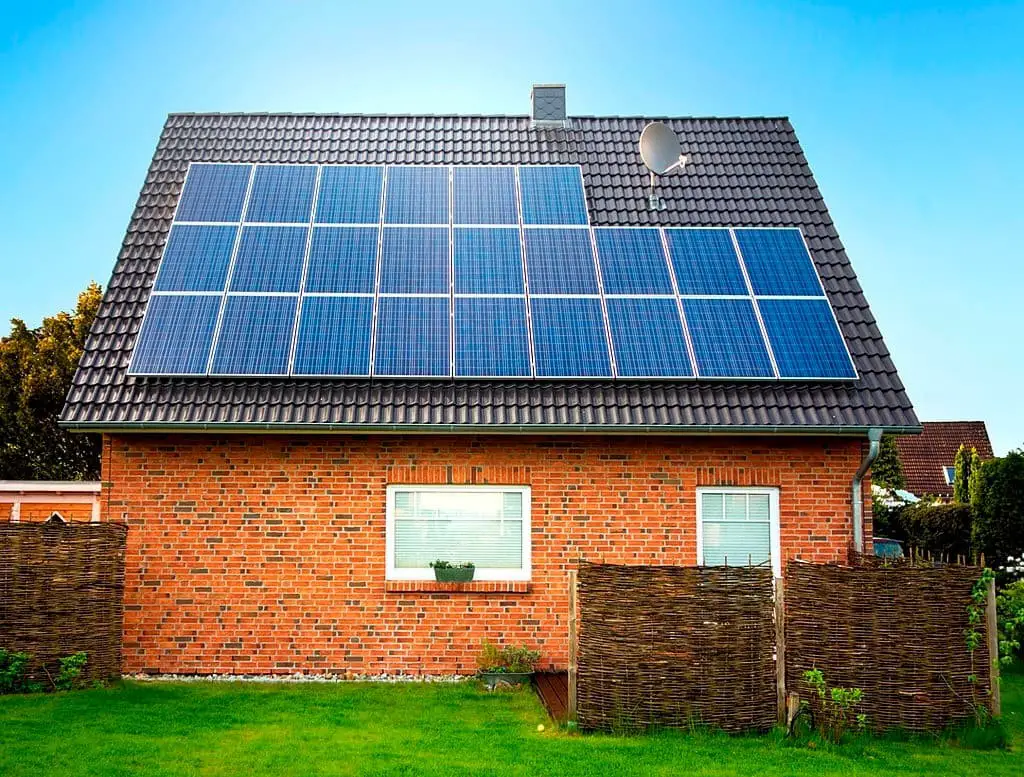
Solar shingles offer a unique approach to harnessing renewable energy, as they’re designed to integrate seamlessly into your roofing system. While the upfront cost is higher than traditional asphalt shingles, the price point has been steadily decreasing with advancements in technology. The benefits of solar shingles far outweigh the drawbacks, as they not only generate clean energy but also provide a normal-looking roof that blends in with its surroundings.
In fact, some solar shingles are capable of absorbing and storing energy from the sun, which can then be used to power appliances and devices at your discretion. A single square of solar shingle material typically costs between $2,100 to $2,500, although the overall installation cost can range from $15,000 to $70,000 depending on the brand and other factors.
Despite the higher upfront cost, solar shingles are a cost-effective and energy-efficient solution that can last for years to come, making them an attractive option for homeowners looking to upgrade their roofing system.
How Much Does Asphalt Roof Shingle Repair Cost?
The affordability of asphalt roofing is one of the primary reasons behind its widespread popularity. Not only is the material itself reasonably priced, but so too are installation costs. As a result, repairs to an existing asphalt roof typically come with a relatively low price tag, ranging from $329 to $1,449, depending on the scope of the work required. In some cases, even smaller-scale repairs may be feasible at a lower cost.
Shingles vs. metal roof
When it comes to longevity, metal roofs clearly have the upper hand. They can withstand the test of time for up to 50 years, whereas shingles typically last around 30 years due to factors like temperature fluctuations and other environmental variables. In terms of upfront cost, however, shingles are a more affordable option compared to metal roofs. Additionally, metal roofs boast eco-friendly and energy-efficient qualities that can’t be ignored.
On the other hand, installing a metal roof often requires the expertise of a professional, whereas shingles can be installed relatively easily with minimal specialized knowledge.
Roof Shingle Brands
GAF
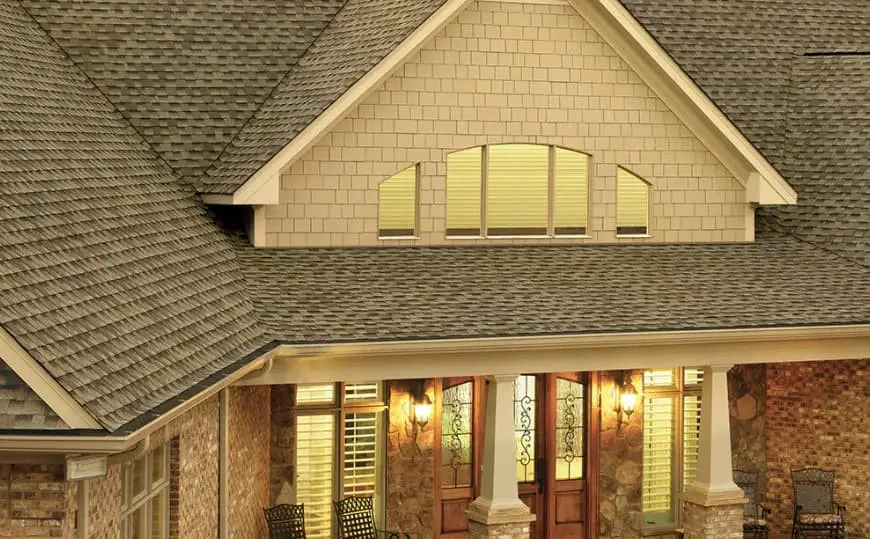
GAF is a well-established brand that excels in providing roofing materials for both residential and commercial purposes. Their product range includes 3-tab, architectural, and luxury asphalt options, although they do have limited style and color choices. One of their most notable offerings is the Timberline Roofing Shingles line, which is currently one of the most popular asphalt shingle lines available.
Homeowners and builders alike appreciate GAF’s commitment to longevity, with some products boasting a lifespan of up to 50 years. Additionally, they offer a comprehensive replacement guarantee within the warranty period for entire roof systems installed with new architectural or luxury shingles.
Owens Corning
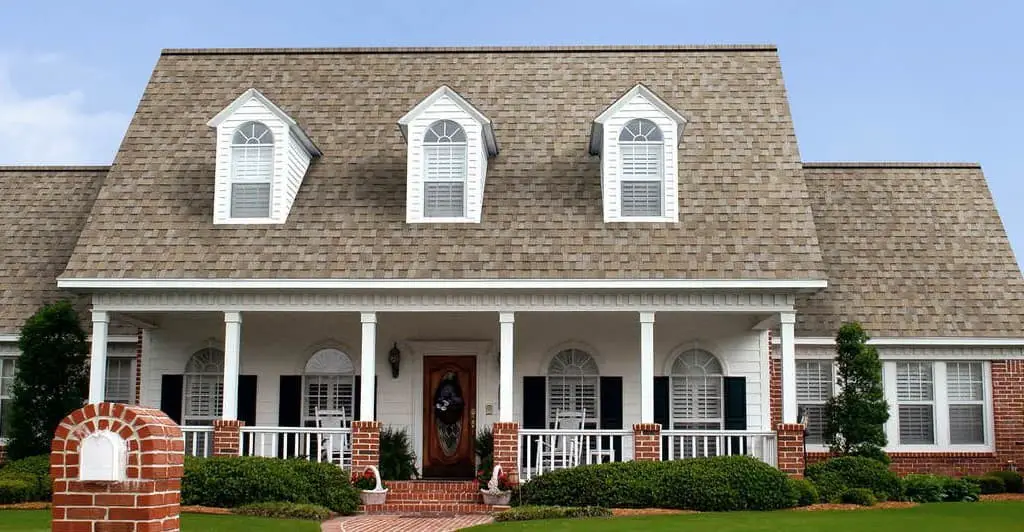
This company is a prominent manufacturer of insulation, roofing, and composite fiberglass products for residential and commercial settings. Like GAF, they provide a range of asphalt shingles, including 3-tab, architectural, and luxury styles, catering to various roofing needs. What sets them apart is their impressive 50-year lifespan guarantee on their roofing materials, backed by a comprehensive warranty that covers full replacement within the specified period.
Additionally, they offer five distinct architectural asphalt shingle lines, offering customers greater flexibility in terms of style and color options.
Certainteed

CertainTeed specializes in producing exterior and interior building products for various structures, including roofing systems, siding, fencing, decking, railing, trim, insulation, gypsum-based materials, and ceiling solutions. The company offers a diverse range of styles and colors for their asphalt shingle products, allowing homeowners to select the perfect match for their property. With CertainTeed, customers can expect an extensive array of options when it comes to roofing materials.
Should you require assistance, the brand is only a call away. Notably, hiring a certified roofer or contractor affiliated with CertainTeed provides added peace of mind, as they offer full replacement coverage in the event of damage within the warranty period. Like their competitors, CertainTeed prides itself on providing long-lasting products with an estimated lifespan of 50 years.
TAMKO
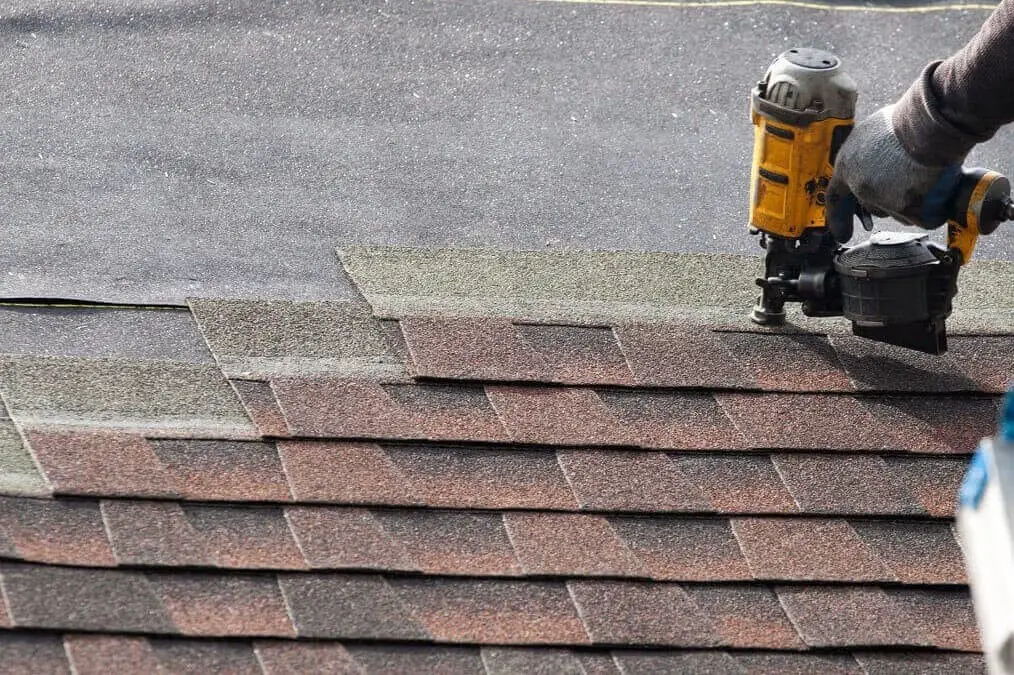
This renowned brand focuses on residential and commercial roofing solutions, including 3-tab, architectural, and luxury asphalt shingles, as well as waterproofing products, cement, and coatings. While they may not be well-known for their asphalt shingle offerings, TAMKO makes up for it with their Metal Works line of steel shingles.
This innovative product range features StoneCrest Slate, Stone Crest Tile, and Stone Crest Aston Wood Cedar Shake, which provide a unique metal twist on traditional styles found elsewhere in the market. Moreover, just like many other leading brands, TAMKO also offers an enhanced warranty for customers who opt for their comprehensive roof system.
Atlas
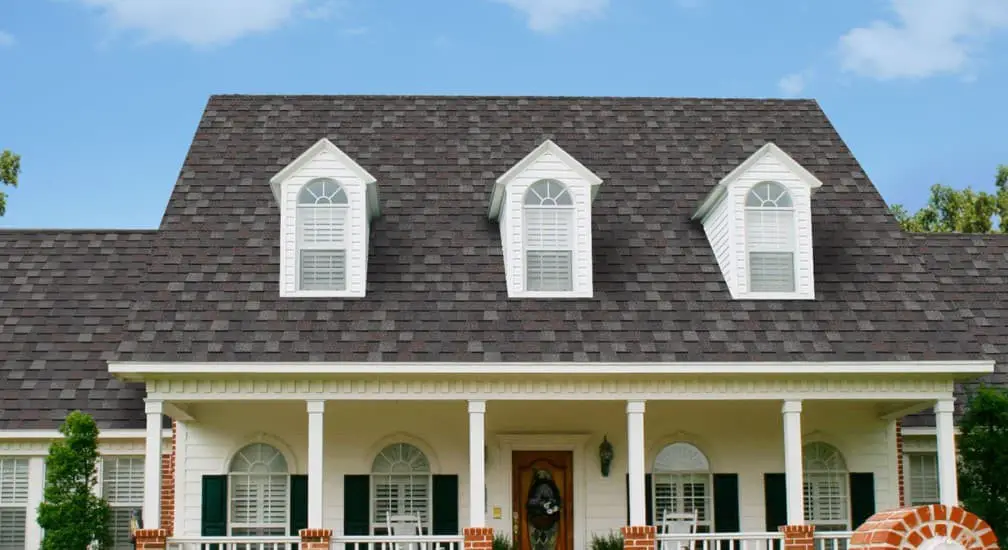
Atlas, a renowned brand in the roofing and construction industry, stands out from its competitors by offering a unique process that sets it apart from the rest. One notable aspect is their commitment to applying Scotch Guard on select shingle products, including their Storm Master Shake, Storm Master Slate, and Pinnacle Pristine lines.
This meticulous attention to detail not only ensures a lifetime guarantee against streaks but also extends to a comprehensive warranty covering the entire roofing system for its entire lifespan.
Pabco
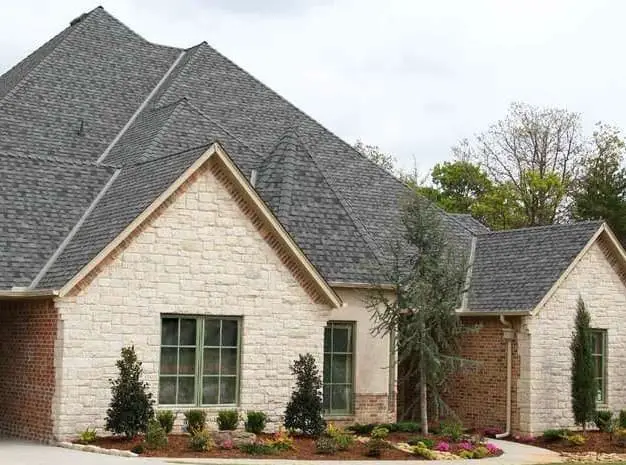
PABCO may not be as well-known as some of its competitors like GAF, Owens Corning, or Atlas, but it has carved out a niche for itself by offering cost-effective options with a focus on unique and beautiful designs. The company’s shingle range includes signature cut shingles, laminated shingles, solar reflective shingles, and 3-tab shingles, each catering to different needs and preferences.
What sets PABCO apart is its impressive variety in terms of color, durability, and aesthetic appeal across its seven distinct shingle styles. Additionally, the brand’s products have gained international recognition, with sales spanning across the globe.
Factors to consider when choosing roofing shingles
As you embark on selecting the most suitable roofing shingles for your abode, several key considerations come into play. A thoughtful evaluation of these elements will help ensure a well-suited choice that withstands the test of time and weather conditions.
Roof Slope
When selecting roofing materials, consider the slope of your roof and its ability to drain water effectively. The suitability of asphalt shingles, for instance, is largely influenced by the steepness of the pitch, which is common in many American residential roofs. However, if you have a roof with low-lying areas that tend to pool water, it’s essential to opt for a specialized product that can withstand these conditions and prevent leaks.
Architectural Authenticity
When selecting a new roof for your home, it’s essential to maintain harmony with its original design. Consider your house’s overall aesthetic and use this as a guiding principle when deciding on the colour, texture, and design of your roofing choice. By doing so, you’ll ensure that your roof blends seamlessly into the existing architecture, creating a cohesive and visually appealing exterior.
Weather Endurance
Selecting a suitable roofing material is crucial, as it must be able to withstand various weather conditions. To make an informed decision, it’s essential to consider not only the type of material used but also its durability, lifespan, and inherent weather-resistant qualities. This information will enable you to determine whether your chosen roofing can effectively shield your property from the elements.
Long-Term Maintenance
When it comes to selecting a roof type, there’s no shortage of options. As you navigate this decision, prioritize factors such as material quality, construction standards, and professional installation methods to ensure your chosen roofing system stands the test of time.
Energy Efficiency
When selecting a new roof, it’s crucial to prioritize energy efficiency. To ensure you’re making an informed decision, take the time to thoroughly research and understand the thermal properties of each roofing material option. By doing so, you’ll be able to identify the most suitable choice for your home’s unique needs.
Material Weight
When selecting a roof for your home, it’s crucial to consider the underlying structure and foundation. This factor can significantly impact the labor costs associated with installation, as a mismatch between the two can result in unforeseen expenses. For homeowners on a tight budget, this can be particularly challenging, making it essential to carefully evaluate the relationship between the roof and the home’s underlying framework.
Price Range
When selecting a roofing material, it’s essential to consider two critical factors: your home’s structure and your budget. The cost of the roofing itself is just one part of the equation, as you also need to factor in the labor costs associated with installation. To ensure a smooth and high-quality process, make sure you’re budget-ready before commencing any construction or renovation work.
The lifespan of Roof Shingles
The lifespan of roof shingles is significantly influenced by its installation and maintenance. When installed correctly, the likelihood of damage to a roof decreases substantially. On average, one can expect a well-maintained roof shingle to last for 30 years or more. However, it’s essential to note that different types of roof shingles have varying lifespans.
For instance, aluminum-coated shingles typically last around 7 years, whereas asphalt architectural shingles can withstand the elements for up to 30 years. Other notable examples include concrete and clay shingles, which boast impressive lifespans of 100 years each. In contrast, coal and tar shingles have a relatively shorter lifespan of 30 years.
The table below provides a comprehensive breakdown of the average lifespan of various roof shingle types: Aluminum Coating: 7 years Asphalt Architectural: 30 years Asphalt 3-tab: 20 years BUR: 30 years Concrete: 100 years Clay: 100 years Copper: 70 years Coal and Tar: 30 years EDPM rubber: 25 years Fiber Cement: 25 years Green (Vegetation-covered): 40-50 years Metal: 40-70 years Modified Bitumen: 20 years Simulated Slate: 40-50 years Slate: 80-100 years TPO Rubber: 20-30 years Wood: 30 years Fiberglass: 25-50 years
Frequently Asked Questions About Types Of Roof Shingles
What are the longest-lasting roof shingles?
When it comes to finding roof shingles that will stand the test of time, slate, clay and concrete options are top contenders for longevity. Slate shingles in particular have earned a reputation for their remarkable durability, with a lifespan exceeding 150 years when installed and maintained correctly. While clay and concrete shingles may not quite match this level of endurance, they still boast impressive lifespans of at least 70 years.
If you’re considering installing these high-performance shingles, it’s highly recommended to bring in the expertise of a professional roofer to ensure a job well done.
What are the quietest roof shingles?
While there may be debate on this point, the architectural asphalt shingle is generally regarded as the quietest type of roofing material. This is due in part to its overlapping tabs, which can effectively eliminate up to 65% of external noise during heavy rainfall or other loud environmental conditions. Other contenders for quietness include roof shingles featuring built-in insulation layers, which can further reduce ambient noise levels.
What are the most expensive roof shingles?
Solar slate shingles stand out for their premium price tag due to the unique installation process and extended lifespan. This type of roofing material is designed to harness solar energy, converting it into electricity. As a result, professional installation is necessary to ensure proper functionality. While the cost may be high, the benefits far outweigh the investment. If budget permits, opting for solar slate shingles can be an astute decision when considering roof replacement.
What are the cheapest roof shingles?
Considering our previous discussions, the most affordable roofing option would likely be an asphalt shingle. Even when fully installed, this option would still come out 30% cheaper than the other shingle types we’ve explored.
What are the most durable shingles?
Slate and metal shingles stand out among other types in terms of durability, boasting features that can withstand the impact of strong winds and changing weather conditions. Their outdoor-oriented design also means they’re resistant to rot, corrosion, and damage, making them a practical choice for roof shingles. Furthermore, their affordability makes them an attractive option for homeowners seeking both durability and value.
What are the best quality roof shingles?
While there is no one-size-fits-all solution for determining the highest quality roof shingles, reputable brands are often a reliable starting point. To help guide your search, we’ve compiled a list of top-notch roofing material manufacturers that excel in terms of performance and durability. Each brand has its unique strengths and weaknesses, but they all share one common goal: to provide premium-quality roof shingles that stand the test of time.
What are the best lightweight roof shingles?
When it comes to choosing the most suitable lightweight roof options, composite, wood, and metal shingles are undoubtedly the top picks. The appeal of these materials lies in their versatility, allowing them to be easily integrated into a wide range of home designs without compromising on structural integrity or causing excessive strain on the foundation.
By opting for lightweight roofing solutions, homeowners can enjoy numerous benefits, including the ability to accommodate almost any type of dwelling, regardless of its size or style.
Which is better: light or dark roof shingles?
When it comes to choosing the right roof shingle color, location plays a crucial role. Light-colored shingles are ideal for warm weather areas as they can help keep your house cooler by reflecting sunlight and heat away from the structure. In contrast, dark-colored shingles absorb heat, making them more suitable for low-temperature areas where additional warmth is needed.
Ultimately, the decision between light and dark roof shingle colors hinges on your geographical location and the specific climate you’re situated in.
What is the most popular roof shingle color?
The palette of neutral shades such as black, brown, and gray, complemented by the bold primary color red, offers a harmonious balance in designing home exteriors. Not only do these colors provide excellent insulation properties, but they also facilitate seamless matching with various exterior styles. Moreover, their ability to maintain a good tone even after fading makes them a practical choice for homeowners seeking low-maintenance options.
Are 50-year shingles worth the money?
When considering the impact of roof shingles on a home’s resale value, a common misconception arises. It’s natural to assume that the longevity of the shingles directly correlates with the property’s worth. However, this assumption is largely incorrect. The lifespan of roof shingles, whether it’s 50 years or 150 years, does not significantly influence the resale value compared to shorter-lived options like 25-30 year shingles.
Instead, what truly adds value to a home when it comes to roofing is consistent maintenance. It’s essential to recognize that longevity ratings do not directly translate to increased resale value.
Conclusion
When considering the right roof shingles for your home, several crucial factors come into play. Climate, budget, foundation, and roof slope are all vital variables that must be taken into account. With so many types of shingles available, you’re well-equipped to make an informed decision about what’s best for your property. Ultimately, it’s essential to strike a balance between your financial means, the needs of your home, and your personal preferences.
As you navigate this process, don’t hesitate to explore reputable brands and seek expert advice on installation. Taking these factors into consideration, roof shingles undoubtedly offer a worthwhile investment. You’re now one step closer to selecting the perfect option for your home.
Related Posts
When it comes to enhancing the curb appeal of your property, the right color combination for your garage door and house can make all the difference. If you’re lucky enough to have a yellow or green abode, finding the perfect pairing for your garage door can be a challenge. However, don’t worry, we’ve got you covered!
In this article, we’ll explore some of the best pairings for a yellow or green house, as well as provide some essential information on how to become a roofing contractor and when to seek professional help. Whether you’re looking to improve your home’s exterior or seeking guidance on the latest roofing trends, our ultimate guide has got it all.

